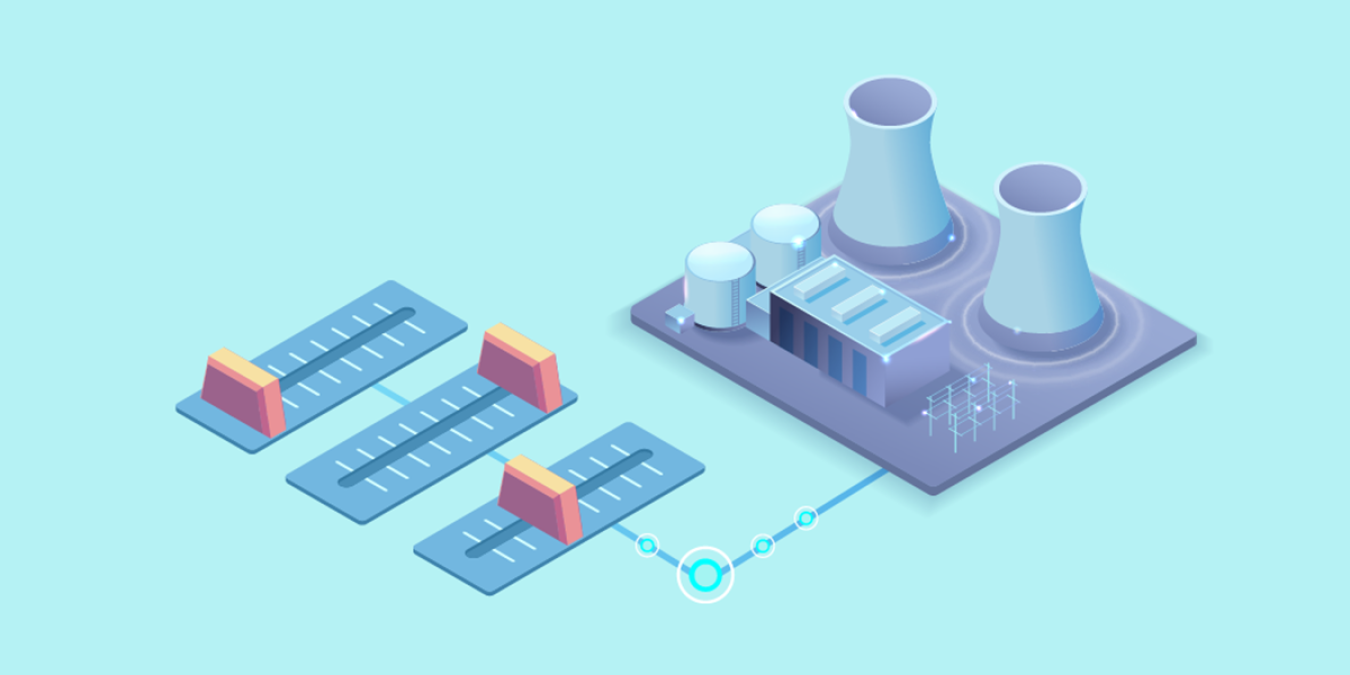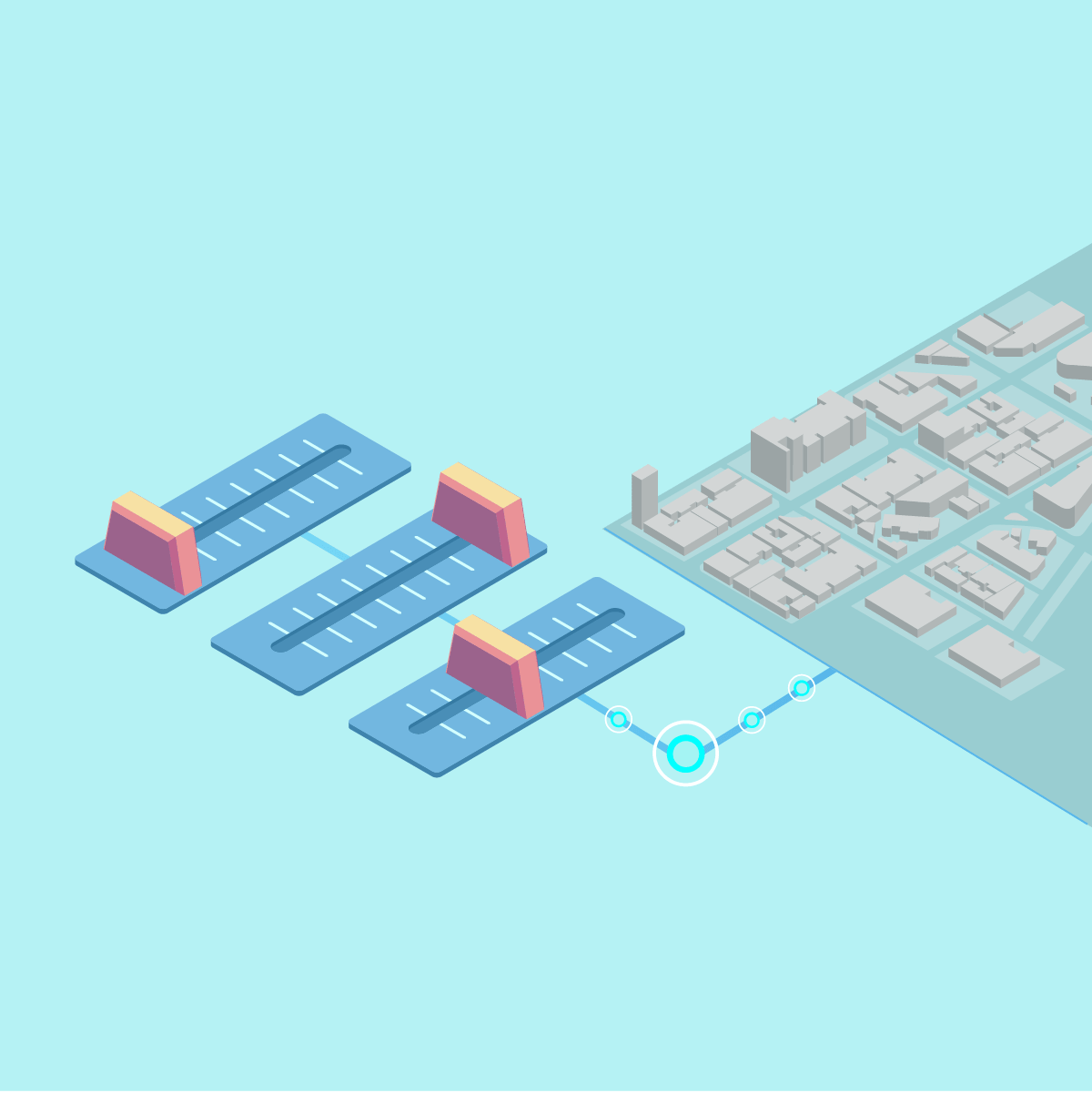Nuclear is evolving into a more flexible energy source that can operate alongside renewable generators to create new hybrid energy systems.
June 23, 2020
Nuclear has been flexing its muscles as a clean and reliable source of power for more than 60 years. It works around the clock, 24 hours a day, 7 days a week.
But as higher penetrations of renewables pour onto the grid, traditional baseload energy sources like nuclear will need to operate more flexibly to produce heat and electricity as needed.
That means baseload power is going to look a lot different in the future as variable energy sources like wind and solar gain larger generation shares on the grid.
Luckily for nuclear, that shouldn’t be a problem.
Current reactors can and do operate flexibly in certain electricity markets around the world, including the United States, and new technologies could extend the versatility of nuclear systems to even greater extremes.
The Flexibility of Nuclear
Flexibility is the latest “buzz word” energy wonks are starting to hone in on. In its broadest sense, this term basically refers to the ability of an energy source to economically provide services when and where it’s needed by the end user.
These services could be more than just power generation. Nuclear’s thermal energy can also be used directly to heat households, drive industrial processes and purify water.
In order to meet these future energy demands, nuclear is evolving into a more flexible energy source that can operate alongside chemical plants and renewable generators to create new hybrid energy systems.
These “one-stop-energy-shops” could lead to alternative revenue streams for nuclear and ultimately lower carbon emissions across the energy, transportation and industrial sectors.

Nuclear Flexibility Infographic
Operational Flexibility
Nuclear reactors are known for their ability to provide constant power but their output can also be modified to meet certain grid demands.
Operators can reduce power output by limiting the amount of steam that goes through a turbine to create electricity, or they can use control systems to slow down the nuclear reaction in the reactor.
France has been doing this for years to match daily and seasonal power demands and reactors in the U.S. Northwest and Canada flexibly operate each spring to accommodate additional hydropower on the grid.
While there are no technical or safety-related impacts in operating power reactors this way, there are some limitations. Operators can’t flex power output as much toward the end of the fuel cycle and it takes a lot of planning, forecasting and time to decrease the power output.
New reactors could offer even greater operational flexibility in the near future. Some small modular reactor (SMR) plants being developed will use multiple units within a single plant to quickly provide power when and where it’s needed. Each power module could also work independently to ramp down power or produce other products simultaneously.
Size Flexibility
One of the biggest trends in nuclear is actually making smaller reactors. SMRs and microreactors will not only provide various power ranges, but also increase nuclear’s flexibility for deployment.
SMRs are expected to be roughly a third of the physical size of a traditional plant and can produce up to 300 megawatts of electric power by adding additional units to the system. These simplified and compact designs, along with microreactors, will dramatically reduce the footprint of the plant and have smaller emergency planning zones that will allow them to be sited virtually anywhere in the world. From remote islands to the heart of an urban city, nuclear can flexibly meet any communities’ energy needs.
Product Flexibility
As new hybrid energy systems are developed, operators can finally tap into nuclear’s full potential to produce multiple products. Some U.S. nuclear plants are already working to demonstrate this ability by using its thermal energy to produce electricity and hydrogen.
Hydrogen can be used to store energy on the grid and is a critical feedstock for most of the chemicals industry. It’s used in the production of various products ranging from fertilizers and plastics to new synthetic fuels.
Hydrogen is currently produced from natural gas in a process called steam methane reforming. This process can be decarbonized by using high-quality steam from a nuclear plant, which can be broken down into water and oxygen via electrolysis. The thermal energy derived from nuclear systems can also be used to heat communities, provide clean drinking water or power other energy-intensive manufacturing processes such as oil refining.
Advanced reactors are expected to operate at even higher temperatures and can be specifically designed to work with renewables in powering chemical plants and water desalination plants right at the plant location.
The Nuclear Innovation: Clean Energy Future (NICE Future) initiative of the Clean Energy Ministerial is working with governments, research institutions, non-government organizations and industry to build new coalitions and partnerships, inform the design process, and ultimately explore the potential for expanding flexible, integrated systems that use both nuclear and renewable energy technologies to meet a wide range of clean energy needs.
Learn more about the NICE Future Flexible Nuclear Campaign, and how coordinated use of these technologies can reliably and affordably accelerate contributions to clean energy systems of the future.
The U.S. Department of Energy's Office of Nuclear Energy supports a national laboratory Integrated Energy Systems Program. The program conducts research, development and deployment activities to expand the role of nuclear energy beyond supporting the electricity grid. Expanded roles include supplying energy to various industrial, transportation and energy storage applications.

